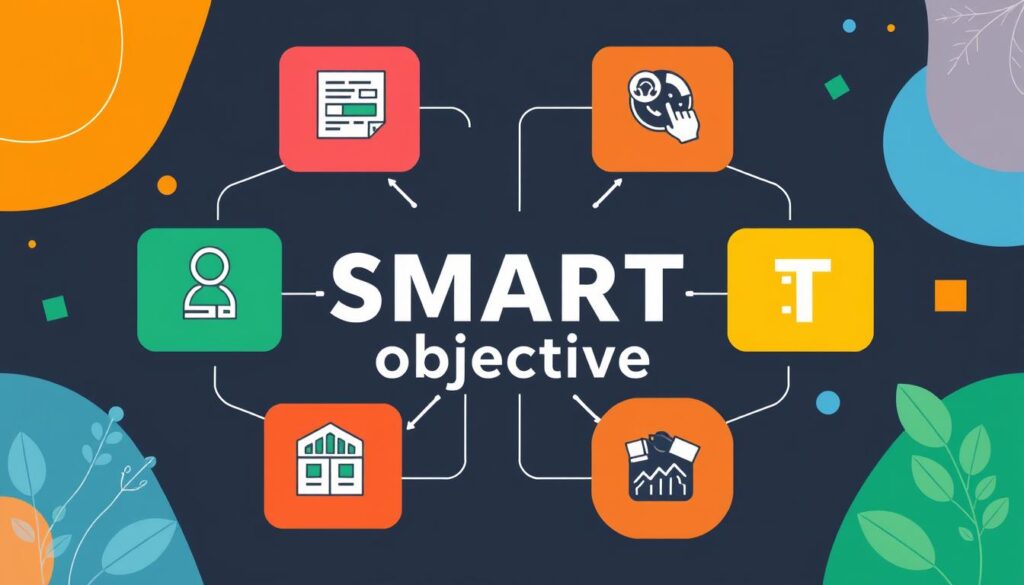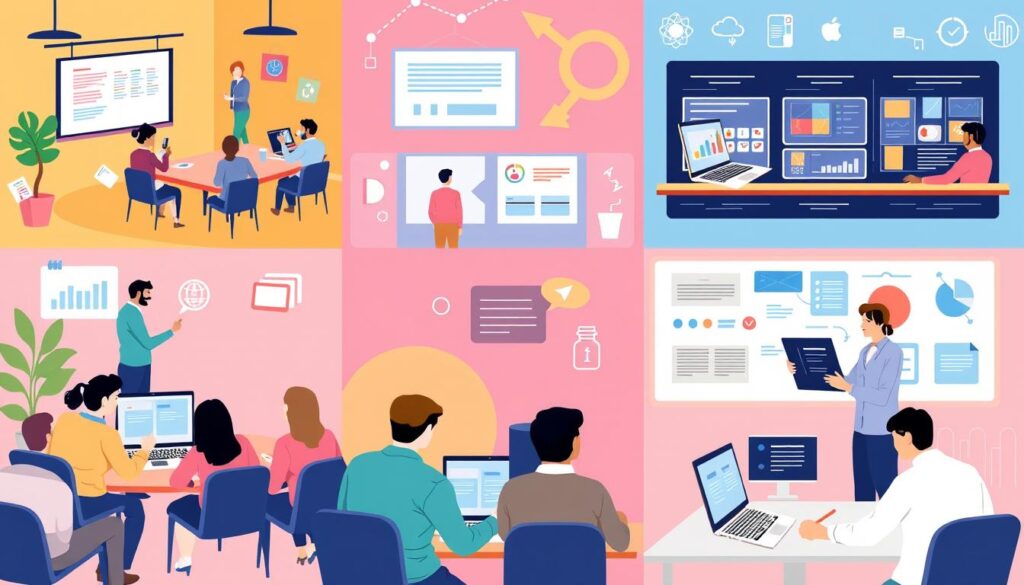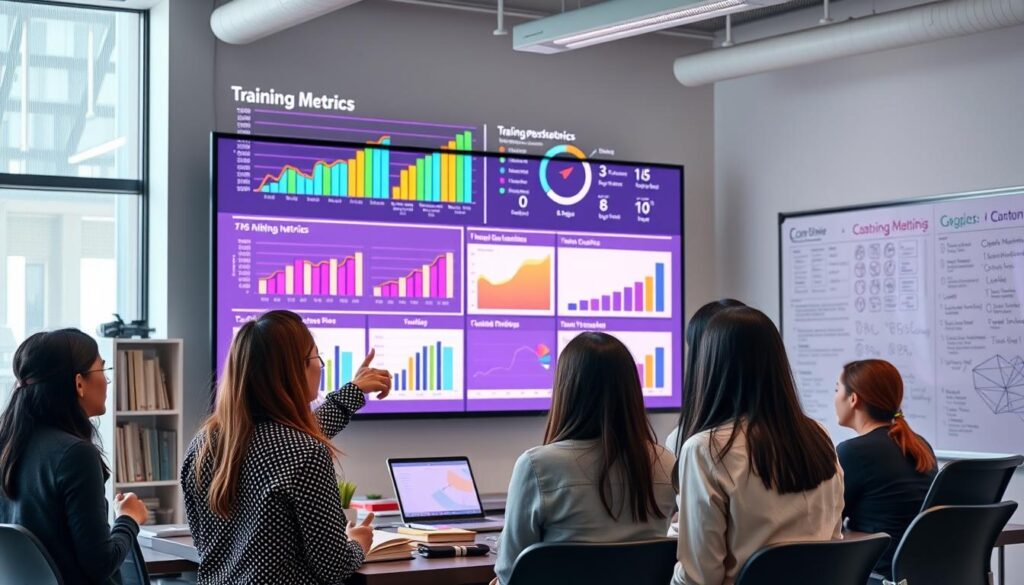Ever wondered why some companies always stay ahead? It’s often because they focus on a strong trainers training program. Many companies have a training program, but few know how to make it grow and improve skills. We’ll share five tips to help small and medium enterprises in the Philippines create a great training program. This will boost employee skills and help your company succeed.
Key Takeaways
- Understand the significance of a well-structured training program.
- Conduct a thorough assessment of training needs.
- Utilize the SMART methodology to set clear objectives.
- Engage employees with diverse instructional techniques.
- Evaluate the effectiveness of your training efforts regularly.
Understanding the Importance of a Training Program
In today’s fast-paced business world, a good training program is key. Small and medium enterprises (SMEs) in the Philippines see big benefits from investing in their team’s growth. It’s not just about improving skills; it also makes employees feel valued and happy at work.
Studies show that good training boosts productivity and profits. When employees have the right skills, they feel more confident and connected to their work. This leads to a better team spirit and higher morale.
Companies that focus on training their staff see lasting gains. They have fewer employees leaving, as people feel their employers care about their future. A solid training program helps employees grow and keeps the company ahead of the competition.
What is a Trainers Training Program?
A trainers training program is designed to boost the skills of those who train others. It’s key for workforce development. It makes sure employees have what it takes to train well.
Defining the Concept
At its core, this program aims to improve skills in leadership, communication, and teaching methods. It’s crucial for running a successful employee training program. With trained trainers, teams can keep learning and growing together.
Key Benefits for Organizations
Having a trainers training program offers many benefits. Some of the main ones are:
- Improved employee performance: Trained employees can train better.
- Enhanced employee retention: Employees feel valued and stay longer when they’re developed.
- Organizational success: When skills match business goals, success grows.
- Increased loyalty and motivation: Employees become more dedicated as they grow and get chances to advance.

These benefits show how valuable trainers training programs are. They’re essential for today’s organizations.
Assessing Training Needs for Your Company
Knowing what training your company needs is key to improving performance. A detailed training needs analysis helps spot where employees need more skills. By looking at performance reviews and direct feedback, managers can focus on training that helps meet business goals.
Conducting a Thorough Needs Analysis
Doing a thorough training needs analysis means checking what skills your team already has. It’s about finding out what skills are missing by comparing what you have with what you need. Getting input from everyone involved helps make sure you see the whole picture.
Identifying Skill Gaps and Improvement Areas
After you’ve analyzed your needs, it’s time to find out where you need to improve. This might involve surveys or interviews with both employees and managers. This way, you can make training programs that really help your team grow and make them happier. The right approach to assessing needs leads to training that really makes a difference. For more tips on making great training programs, check out this resource.
| Assessment Method | Purpose | Benefits |
|---|---|---|
| Surveys | Collect quantitative data on skills | Easy to administer, wide reach |
| Interviews | Gather qualitative insights | In-depth understanding of skill gaps |
| Performance Metrics | Evaluate employee outputs | Objective measure to identify training needs |
Setting Clear Objectives for Training
Setting clear objectives is key to effective training programs. Using SMART objectives helps focus and manage training goals. This method boosts the chances of achieving positive results that improve employee performance.
Utilizing the SMART Methodology
The SMART method means Specific, Measurable, Achievable, Relevant, and Time-bound. It gives a clear direction for training objectives. Each part of SMART ensures goals are clear and reachable.
- Specific: Objectives should clearly state what needs to be achieved.
- Measurable: It’s important to have criteria for measuring progress.
- Achievable: Goals must be realistic, based on available resources.
- Relevant: Goals should match the company’s overall objectives.
- Time-bound: A deadline helps keep focus and urgency.
SMART objectives lead to better planning of training. They help measure success in training programs. This way, companies can see if their training is working and make needed changes.

| Component | Definition | Example |
|---|---|---|
| Specific | Clearly define the objective | Increase customer service satisfaction ratings |
| Measurable | Set criteria for success | Achieve a satisfaction rating of 85% or higher |
| Achievable | Ensure it’s feasible with resources | Allocate necessary training time and materials |
| Relevant | Align with broader business goals | Improve service to retain customers |
| Time-bound | Set a deadline for accomplishment | Achieve this rating within the next quarter |
Developing Engaging Training Content
Creating engaging training materials is key to a good learning environment. Using different teaching methods is important for training content development. It helps employees understand and remember what they learn.
Instructional Techniques to Consider
Using various instructional techniques makes training better. Here are some good methods:
- Interactive sessions that encourage everyone to join in.
- Workshops for hands-on practice and applying what’s learned.
- Case studies that make learning more relatable.
Integrating Various Learning Formats
Using different formats helps meet different learning styles. Think about mixing:
- Online training programs for flexibility and easy access.
- In-person workshops for direct interaction and feedback.
- Blended learning that combines both.
By mixing these formats, employees can learn at their own pace. They also get to join group sessions to solidify their understanding. Using the right engagement strategies makes your training memorable and effective.
Choosing the Right Delivery Methods
Choosing the right training delivery methods is key to a program’s success. Companies need to weigh their options between traditional and virtual learning. Each has its own benefits that can boost training effectiveness.
Traditional training offers hands-on experiences and real-time interactions. It’s great for building team skills and learning by doing. For example, in mechanical repair or culinary arts, direct supervision is crucial.
Virtual learning brings flexibility and access to many resources. It lets participants learn from anywhere, fitting their schedules. Online platforms make it easy to reach employees worldwide. It’s perfect for soft skills training, where relaxed digital discussions are beneficial.
Using both methods together can be the most effective. A hybrid approach meets different learning styles and ensures thorough knowledge transfer. For example, start with virtual learning for theory, then do practical workshops in person. This way, you get a well-rounded learning experience that fits your organization’s needs.

Implementing Effective Training Workshops
Creating successful training workshops needs careful planning and managing resources well. A detailed training timeline is key to your workshop’s success. It ensures a smooth flow that boosts employee engagement and learning.
Having a clear schedule helps manage what participants expect. It also fits sessions into their daily routines smoothly.
Creating a Structured Timeline
Starting with a structured timeline is crucial for a good implementation strategy. This timeline should list important milestones, deadlines, and activities before the workshops. Knowing their roles and responsibilities helps everyone work better together.
Ensuring Resource Availability
Getting the right training resources is vital for delivering effective training. Companies must check their logistical support and prepare all necessary materials. This includes places for training, tools, and technology.
Doing a thorough check of these needs before the training ensures everything works well. This makes the training experience smooth and effective.
| Resource Type | Description | Importance |
|---|---|---|
| Training Venue | Location where the training takes place. | Essential for accessibility and comfort. |
| Training Materials | Books, handouts, and digital resources used in training. | Enhances understanding and retention of information. |
| Technology Tools | Software and hardware required for effective training. | Facilitates interactive learning experiences. |
| Logistical Support | Staff or services that assist with the execution of training. | Ensures that everything runs smoothly on the day. |
Evaluating the Success of Your Training Program
Checking if a training program works well means using a clear plan. This plan includes setting goals and getting feedback from those who took the training. These steps help see how the program affects people’s skills and the company’s goals. A good plan makes sure training stays useful and effective.
Setting Key Performance Indicators (KPIs)
It’s key to set goals for your training program. These goals might be:
- How many people finish the training
- How well they remember what they learned
- How their work skills get better
By watching these goals, companies can see if their training is working. Making changes based on this feedback helps make training better. This leads to a culture that always gets better.
Gathering Participant Feedback
Getting feedback from those who took the training is very important. Using surveys, interviews, and group talks can give great insights. These insights show:
- What parts of the training they liked
- What needs to get better
- What new topics they think should be covered
This feedback is key to making the training better. It helps make sure the training fits the changing needs of the company and its workers. Using feedback helps make training more effective and relevant as time goes on.

Benefits of Ongoing Training and Professional Development
Training and professional development are key to a great workplace culture. They help employees grow and keep up with changes. This makes the workplace lively and encourages everyone to do their best.
Building a Culture of Continuous Learning
Creating a culture of learning lets employees chase their dreams. It’s good for them and helps the company too. When people feel their growth matters, they stick around longer and feel more at home.
Enhancing Employee Satisfaction and Retention
Training keeps employees happy and helps keep them from leaving. When they see the company cares about their growth, they’re more committed. This leads to a happier team and better work.
| Benefits | Impact on Employees | Impact on Organization |
|---|---|---|
| Continuous Learning | Boosts motivation and adaptability | Enhances innovation and competitiveness |
| Career Growth Opportunities | Increases job satisfaction | Reduces turnover and attracts talent |
| Skill Development | Improves performance and efficiency | Drives organizational success |
| Strong Workplace Culture | Fosters teamwork and collaboration | Establishes a positive brand reputation |
Conclusion
Creating a trainers training program for small and medium enterprises in the Philippines is key for growth. It involves using effective training strategies. These include ongoing assessment, clear goals, and various ways to share information.
This method makes the workforce more dynamic and engaged. It boosts individual skills and helps the whole organization succeed.
Investing in a strong training program also keeps employees happy and loyal. When people feel they’re growing, they stick around and help the company thrive. So, training is not just a must; it’s a way to make your business better and your workplace great.
In the end, a good trainers training program helps both people and businesses grow. It keeps companies ahead in a changing market. Start learning more, and watch your business grow.
